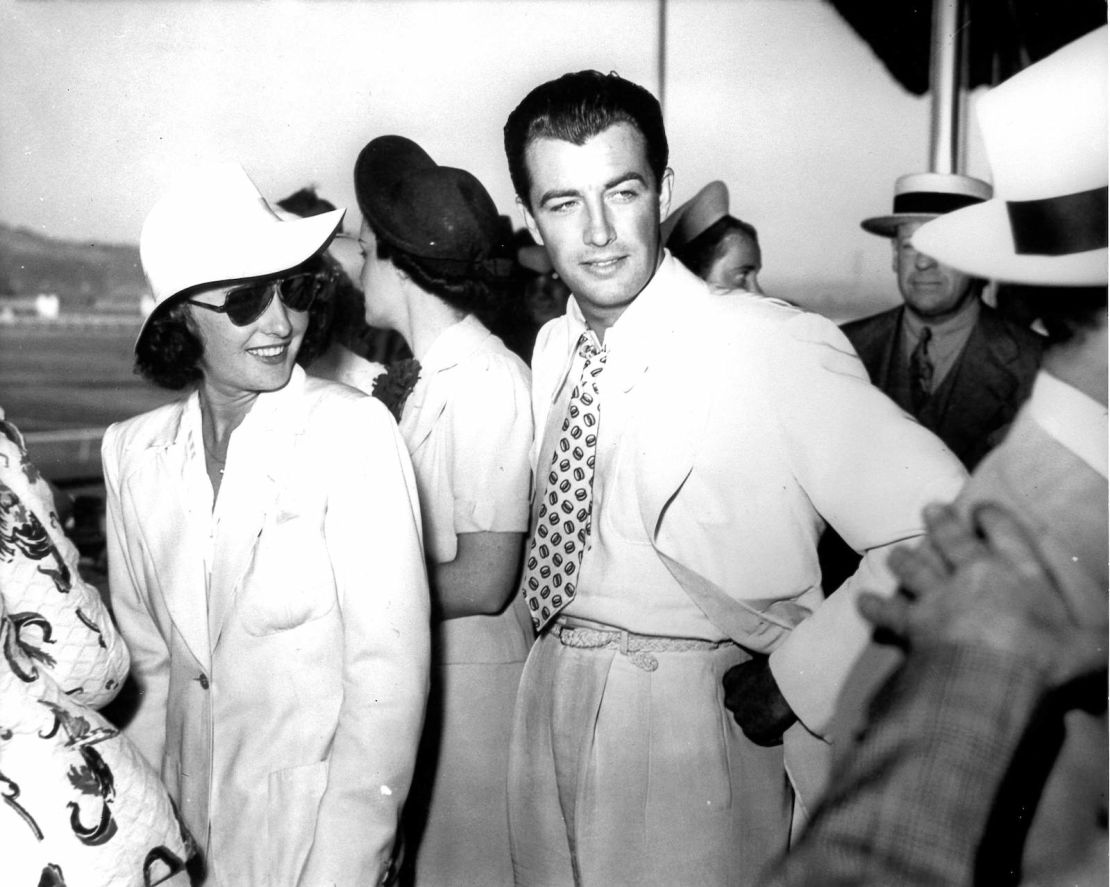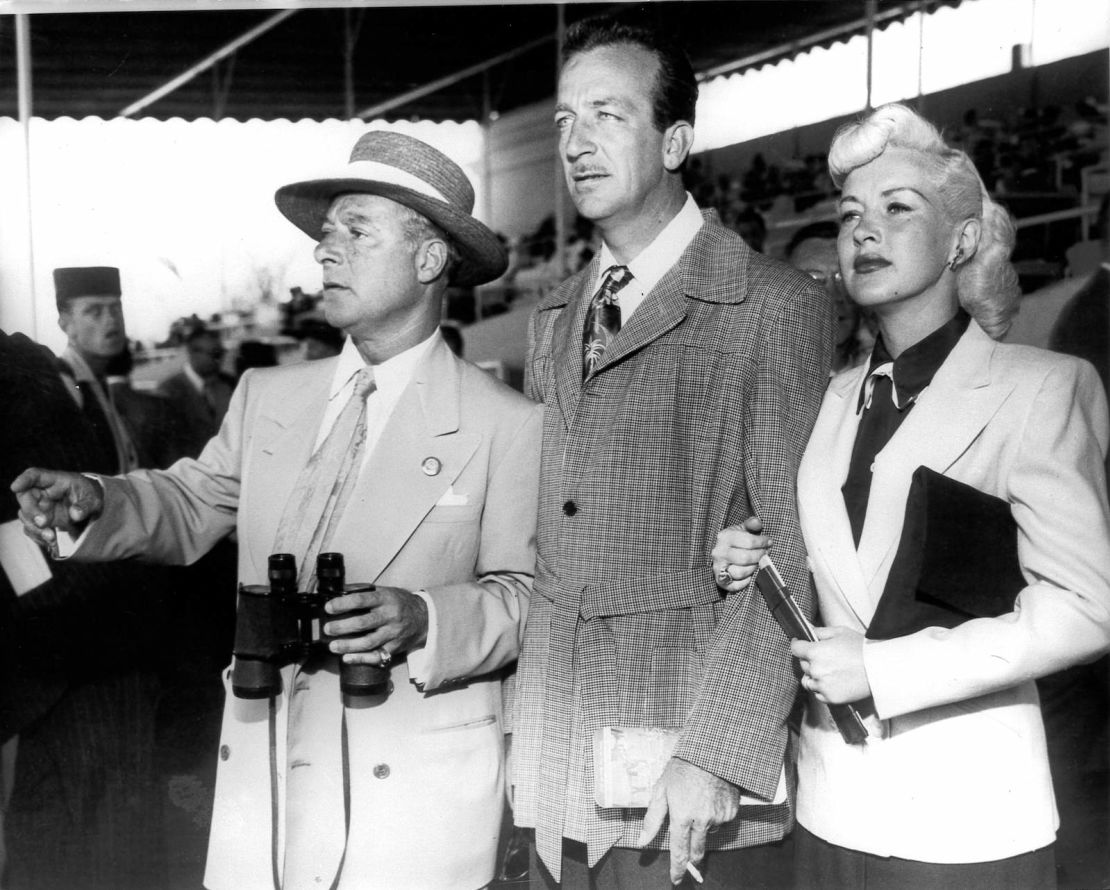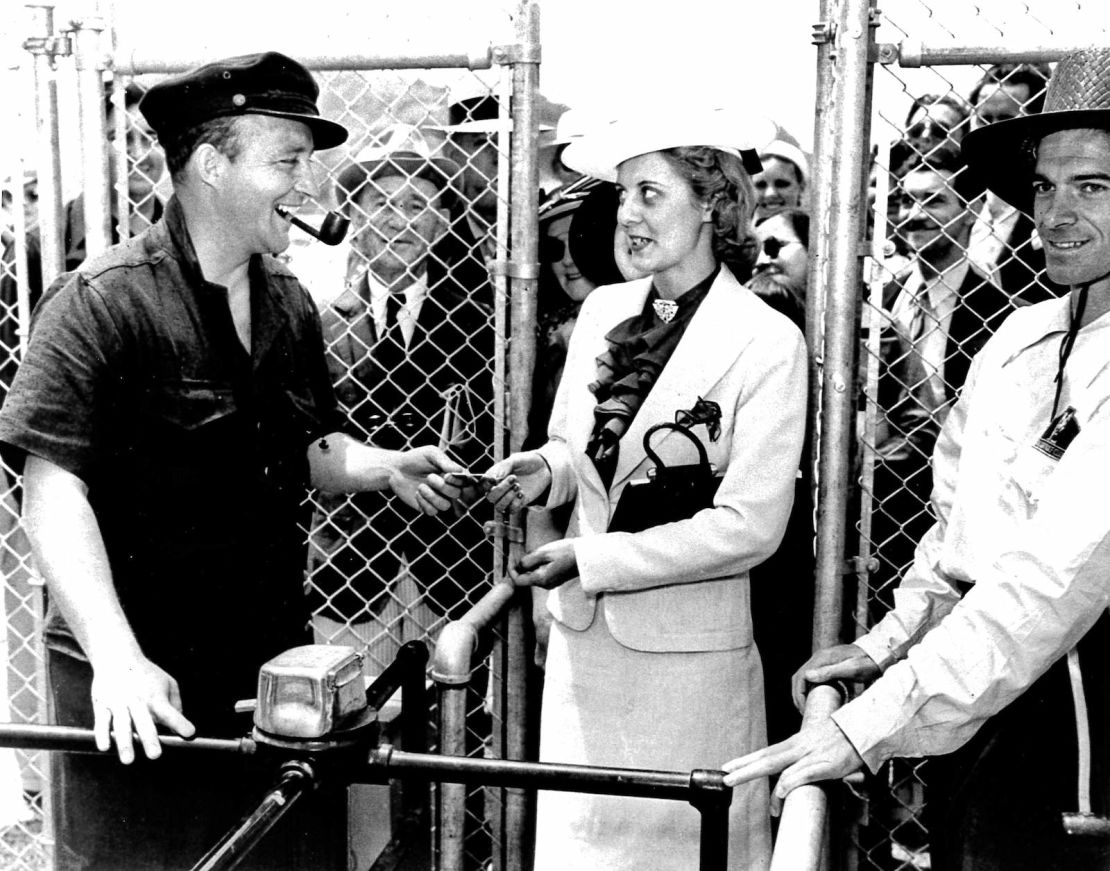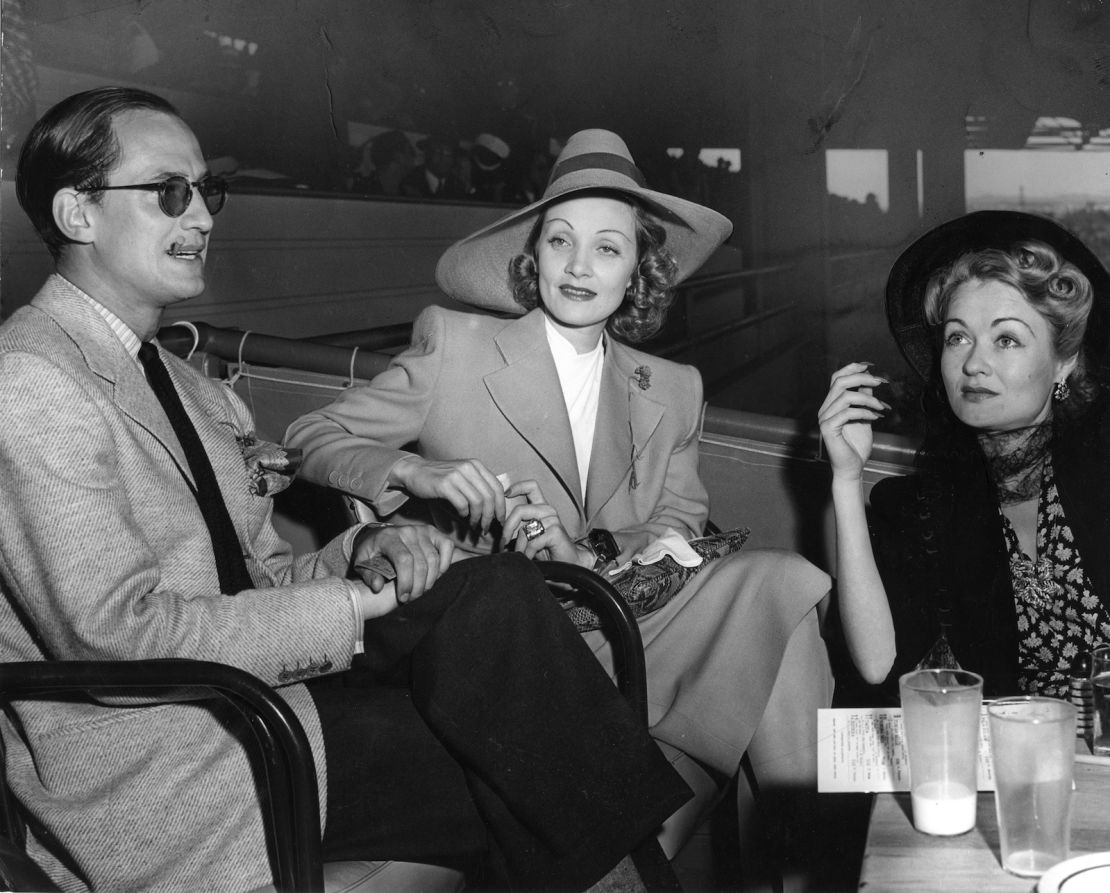With the movie industry booming and a host of new horse racing tracks opening, there was only one place to be seen in 1930s California: the races.
The likes of Fred Astaire, Barbara Stanwyck and Gregory Peck were all trackside regulars during Hollywood’s golden age. And as well as turning racetracks into some of the country’s most glamorous social clubs, many of the era’s best-known figures were closely involved in training and breeding horses.
But Hollywood actors, producers and executives weren’t just expressing their love for the sport – or even their evident taste for gambling. Attending races was a crucial promotional tool for major studios, many of which had financial interests in both the movie and horse racing worlds.

The cameras knew the stars would arrive and, in turn, the stars knew the cameras were waiting. In this sense, it was a marriage of convenience, according to Alan Shuback, whose new book “Hollywood at the Races” explores the two industries’ intertwined histories.
“The stars enjoyed going out for the social occasion and the betting, but the studios knew that if their stars went out there, they’d get their picture taken,” Shuback said in a phone interview. “Every paper in the country would have photos of these people with what dresses they were wearing, so it was a mutual love affair.
“Racing loved film, film loved racing – and the newspapers loved them both.”
This glitzy depiction stands in stark contrast to the California of the previous decade. While the 1920s had heralded an explosion in movie production and audience numbers, the period’s conservative gambling and alcohol laws kept rich actors’ social lives in check – while they were in America, at least.

“You had all these rich, talented, sociable people who couldn’t get a legal drink, couldn’t put a legal bet down and had no major league sports,” said Shuback. “So they went to Tijuana (in Mexico), where there was horse racing, casino gambling, bars, restaurants and prostitutes – everything that movie stars liked.”
Eventually, California eventually “got wise,” as Shuback put it. The state legalized betting on horses in 1933 following a referendum on the issue. That same year, prohibition came to an end across most of America. The stage was set for a new type of society event.
New society venues
It wasn’t long before racecourses opened to cash in on the state’s newly relaxed laws. And the era’s three most important racing venues all had close ties to the movie industry.
Santa Anita Park, which had closed in 1909 (the year that California outlawed parimutuel betting, the form of betting racing relied on), was brought back to life in 1934 by a group of investors, including “Laurel and Hardy” producer Hal Roach. Then, in 1937, Bing Crosby co-founded the Del Mar racetrack in San Diego county. The singer and actor even stood at the venue’s gates to greet attendees on the inaugural race day.

A year later, Hollywood had its very own racetrack – Hollywood Park, which counted Walt Disney, Samuel Goldwyn and the Warner Brothers among its shareholders. Though Shuback notes that these studio bosses were partly motivated by anti-Semitic attitudes at Santa Anita – namely that Jews were not welcome at its exclusive Turf Club – they were also responding to growing interest in the sport.
And the relationship between the movies and horse racing worked both ways: Nearly 150 racing-themed films were released between 1930 and 1960, according to Shuback’s research. Storylines ranged from the exploits of an aspiring jockey (in “Boots Malone”) to the real-life tale of a Native American trainer preparing a horse for the Kentucky Derby (in “Black Gold”).
Racing was also incorporated into the era’s popular genres: screwball comedies like the Marx Brothers’ “A Day at the Races,” and musicals like “Broadway Melody of 1938.” Horse racing even featured in film noirs like “The Ex-Mrs. Bradford” and Stanley Kubrick’s “The Killing,” a critically acclaimed thriller about a $2-million heist at a racecourse.
A world of excess
Yet, for all its glamour, Hollywood’s love affair with racing claimed its fair share of victims. A number of famous actors, including Chico Marx of the aforementioned Marx Brothers, struggled with gambling addiction while simultaneously making movies that glamorized the sport.
Also among them was Mickey Rooney, one of the most bankable stars of 1930s and 1940s. Around the same time he was starring in racing-themed films like “Thoroughbreds Don’t Cry,” with Judy Garland, and 1944’s “National Velvet” (in which he plays a former jockey who helped a young Elizabeth Taylor train a horse for England’s famous Grand National), Rooney was developing his own betting systems and squandering his earnings in the process.

He became so obsessed with the sport that he made the 200-mile round-trip from Los Angeles and Del Mar for each day of the racecourse’s 23-day August meeting in 1940, according to Shuback, who said that Rooney lost nearly $1 million at the races that year.
“He (Rooney) once referred to Del Mar as a toilet,” the author said. “Not because it was dirty – it was sparkling clean – but because of the amount of money he flushed down it.”
Some stars played the game more wisely. And while many Hollywood figures simply used the races for publicity, or pumped money into losing stables, others were bona fide successes.
Among them was Louis B. Mayer, co-founder of MGM, who – on the advice of his doctor – took up horse racing as a hobby to help relieve stress. He went on to train and breed winning horses, as did Fred Astaire, whose thoroughbred racehorse Triplicate won the Hollywood Gold Cup. Barbara Stanwyck also bred horses, and Betty Grable said that one advantage of buying a house on the beach at Del Mar was that she had easy access to the races.
Slow decline
Hollywood’s infatuation with the races continued well into the 1940s and 1950s, but by the 1960s the original generation of high-profile racegoers was retiring. The stars who took their place were more likely to be found in Sunset Boulevard clubs than trackside at Del Mar.

“Although racing continued to be very popular in America, Hollywood’s interest became less and less,” said Shuback. “By the 1960s and 70s, there just weren’t as many movies being made as they had been, and the genre of horse racing films was one of the first to go by the board.”
Emblematically, Hollywood Park – which had teetered on the edge of bankruptcy in the 1980s, before it was bought out and enjoyed a brief revival – finally shut its doors in 2013. The site of the famous racecourse is now being used to build a new stadium for the Los Angeles Rams.
“The two industries have very little to do with each other (today),” Shuback said. “There are a few people in Hollywood who own horses now, but all the color and excitement that Hollywood produced at racetracks is long gone.”
“Hollywood at the Races: Film’s Love Affair with the Turf,” published by University Press of Kentucky, is available now.












